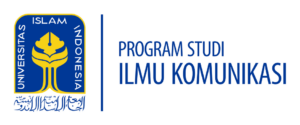The invitees gradually arrived. That morning, in the 3rd floor of Communication Department, all the staff began to rush back and forth. They are staff from academics, laboratories, documentation teams, to the Center for Documentation of Alternative Media Studies (PSDMA) Nadim which are prepared the room, presence, some practicum forms. The invitees were lecturers in this semester of 2019/2020 academic year. Ahead of the awaited event, the Lecturer and Practicum Coordination Meeting, Communication Department of FPSB UII, Puji Hariyanti, Head of Communication Department, was ready with a presentation slide in front of the audience. After everything is done, the coordination meeting begun.
The interesting things from the meeting that held on August 26, 2019, for example, Puji explained that as much as possible the assignment of students is not copying and paste or do the plagiarism. Plagiarism can damage the integrity of students. Students must be educated to anti-plagiarism action since they are students, so that when they work they have integrity. “Communication Department is committed to educate students to have integrity, so every task must be digitally collected and it can be inputed in Turnitin plagiarism testing software,” said Puji.
Undergraduate Thesis and final project in Communication Department have now been checked by a special team for plagiarism checks. Checks carried out with the help of Turnitin (via online and computerized) as well as by manual checks by specially trained teams can recognize models of writing that have a high indication of plagiarism. According to Her, there should be no “Kopasus”, the abbreviation She made which means the Copy-Paste troops . Students must be introduced that plagiarism is an act of hurting science and knowledge.
At the end of the meeting, Puji reminded the lecturers to remember the wise words from the the deceased Kiai Maimun Zubair, as a guide for educators: “So the teacher does not need to have the intention of making people smart. Later you will only get angry when you see that your students are not smart. Your sincerity will disappear. The important thing is the intention to convey knowledge and educate the good. Being smart or not, leave it to God. Pray for it continuously so that students can get guidance. “

